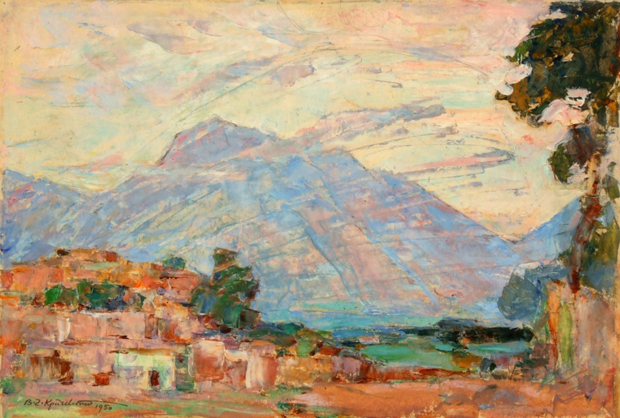Venezuela
Venezuela. A country in South America (2018 pop 28,887,118), with an area of 916,445 sq km. Caracas is the capital. There were few Ukrainians in Venezuela prior to the Second World War. Between 1947 and 1950 approximately 3,400 Ukrainians arrived from displaced persons camps in Europe; they were joined by a small number of Ukrainians from Czechoslovakia, Yugoslavia, France, and Colombia. Many of the displaced persons quickly departed to North America and left the number of Ukrainians in Venezuela (including the native-born) at an estimated 1,500 in 1968. Of this number, 800 resided in Caracas, and a total of approximately 350 in the cities of Valencia, Puerto Caballo, and Maracay. The remainder are dispersed elsewhere. Still further departures had reduced the community in the whole of Venezuela to approximately 800 by 1987. No municipalities bear Ukrainian names, although there are two streets in the Alta Vista and Los Magallanes districts of Caracas which (from 1950) bear the name ‘Ucrania.’ All Ukrainians in Venezuela are naturalized citizens.
Ukrainians in Venezuela are predominantly urbanized (90 per cent). Many had tried settling on the land, but unaccustomed to farming in tropical conditions, most of them soon moved to the cities. In the late 1960s about 40 percent of the Ukrainians were unskilled and semiskilled laborers; another 35 percent were engaged as merchants, artisans, and entrepreneurs; 15 percent were in the liberal arts professions; and 10 percent were farmers and rural laborers. The majority were home owners.
The Ukrainian Hromada in Venezuela was established in 1949 and obtained state approval as a nonpolitical organization and as the legal representative body for Ukrainians in Venezuela. The hromada maintained branches outside Caracas in Valencia, Maracay, and Barquisimeto. Its headquarters are situated in the organization’s own Ukrainian People's Home in Caracas. The following groups have also been active in Venezuela: the Ukrainian Women’s Alliance in Venezuela, the Society of Ukrainian Youth, the Plast Ukrainian Youth Association, the Ukrainian Youth Association (SUM), the Society of Ukrainian Engineers, the Association of Ukrainian Veterans, the Chornomortsi Sports Society, the Committee for the Liberation of Ukraine, and the Prosvita reading club. Ukrainian-language programs have been broadcast in Caracas.
Members of the Ukrainian Catholic church constitute (1980) approximately 58 percent of the Ukrainian community in Venezuela. The remainder are Orthodox (approximately 38 percent) and, Protestant. Both the Catholics and the Orthodox founded their parishes in 1948. The Ukrainian Autocephalous Orthodox church has two churches, one in Caracas and one in Valencia.
The Ukrainian community in Venezuela, particularly in Caracas and Valencia, has a fairly high level of identity retention, although the number of Ukrainians not fluent in the Ukrainian language is considerable. Some of the more noted Ukrainians who lived in Venezuela were P. Horsky, O. Halchenko, Vasyl H. Krychevsky, Halyna Mazepa, K. Belsky, Fedir Yemets, L. Martyniuk, Vasyl Paneiko, and K. Koliankivska.
BIBLIOGRAPHY
Panchyshyn, O. Ukraïntsi u Venesueli (Chicago–Caracas 1988)
Serge Cipko
[This article originally appeared in the Encyclopedia of Ukraine, vol. 5 (1993).]

.jpg)